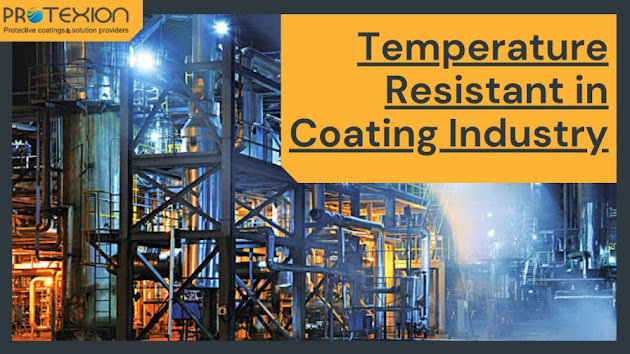The coating can be a coating that is applied to the surface of the object, commonly known as a layer. The purpose of applying the coating is also decorative, functional or both. The coating itself can also be a versatile coating or it will only cover the components of the substrate. An example of all those types of coating can be the product label of several beverage bottles - one aspect is associated with a holistic purposeful coating (adhesive) and therefore there are one or more decorative coatings in the appropriate pattern (print) to create alternate aspects words and pictures.
The substrate for thin film of the intended material in most industrial coating processes involves applications such as paper, fabric, film, foil or sheet stock. If the wound method starts and ends during the substrate roll, can that statement be called a “roll-to-roll” or “web-based” coating? Once rolled by a coating machine the wound substrate is commonly known as a web. The coating is also applied as a liquid, gaseous or solid.
Numerous methods exist to evaluate coatings, including both destructive and non-destructive methods. The most common destructive method is microscopic coating of the coating and mounted cross-section of the substrate. The most common non-destructive techniques include ultrasonic thickness measurements, XRF coatings thickness measurements, and ultra-microns testing.
High temperature-resistant coatings are used in industry and market to prevent steel from rusting while in service. There are several test protocols that are used to evaluate the performance of those coatings; However, comparing performance is challenging due to the lack of uniformity or consistency in the test methods. This article lists the industries and markets that use heat-resistant coatings, describes the most common types of products available, as well as the results of similar comparisons of performance with the help of various test protocols and previous installations.
High-temperature coatings are frequently used in a variety of plants / facilities using high-temperature processes in the manufacturing, military, petrochemical and energy industries in piping, fireproofing, jet engines, offshore rigs, basic equipment and aerospace.
One of the most important users of industrial high-temperature coatings is processing facilities such as power plants, petrochemical plants and refineries. These facilities often have a deep network of piping, ships and tanks that require protection from rust. Rust under insulation (or CUI) is usually preferred as steels are generally insulated at extreme temperatures, as active rust cannot be seen with the naked eye without first removing the insulation.
High Temperature Coating Types and Characteristics are:
Made from either organic or inorganic materials, high-temperature coating types are usually epoxy, epoxy phenolic, epoxy novolac, silicon or more specific multi-polymeric matrix.
Epoxy coatings are commonly used in oilfield, sound and petrochemical facilities applications and have been shown to be favorable for impact and abrasion resistance. Epoxy coatings are organic polymers that undergo chemical reactions between epoxy resins and co-reactants / hardeners / curators. There are also epoxy thermosets, which indicate that they cannot melt when cured and may have a modified type of design in vinyl or plastic cans. Excessive heat can damage and degrade the chemical bonds in the thermoset, causing them to stain, reduce waviness and / or become brittle. Epoxy resins are also responsible for radiation and can chalk if exposed to sunlight.
Epoxy phenolic coatings are classified as either an environmental treatment, during which phenolic and epoxy resins react with chemical temperature or heat treatment, where the coating is heated to 350-400°F to accelerate the coating or to activate the catalyst or curing agent inside. Coating. Epoxy is a phenolic chemical, solvent and provides temperature resistant coating and is commonly used for immersion services, tank linings and high-temperature oil and sea immersion services. There are other suitable applications when severe chemical resistance is important, but do not have a high degree of flexibility. The advantages of epoxy phenolics include excellent adhesion properties, temperature resistant coating of 400 से C and resistance to solvents, chemicals and abrasion. Limitations require low weather capacity and flexibility, relatively short weather time, and often heat treatment at relatively high temperatures.
Epoxy novolac coatings improve heat resistance due to their molecular structure, which involves more cross-linking than other epoxy. Novolac epoxies are generally heat resistant up to -350- heat heat 0F. Novolac epoxies are generally known to be more resistant to oxidizing and non-oxidizing slides and to other resistance to apophysis and aromatic solvents.
Silicone coatings contain resins that are either pure or hybrid polymers and contain organic pendant groups of silicon and oxygen atoms alternately inorganically. The polymer structure provides thermal stability and oxidation resistance. Silicone is basically transparent from sun to ultraviolet. High-temperature, 100% silicone coatings are single component and cured by heat-induced polymerization. This thin film dries the solvent evaporator to ensure adequate mechanical strength for handling and transport. However, complete treatment can only be achieved after exposure to temperatures in the 350-400o F range. The equipment takes a long time to heal as it returns to its operating temperature.
Applications of Heat Resistant Coating are:
Automotive & Transportation
Industrial
Consumer Good
Building & Construction
Relatively few general protocols have been developed for high-temperature coatings to evaluate the performance around the services provided. The Protexion coatings industry will benefit from standardized growth; Detailed evaluation evaluation techniques for high-temperature coatings to prevent corrosion.
We will be happy to help you get your temperature-resistant coating project off to a good start by providing a properly designed coating for your details. More information about then Visit -
http://www.protexion.in/high-temperature-coating.php

Comments
Post a Comment